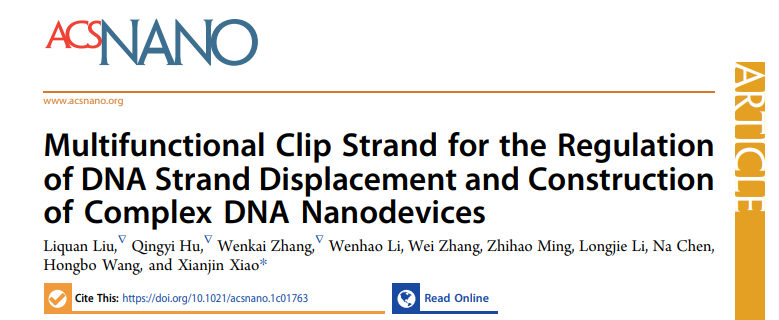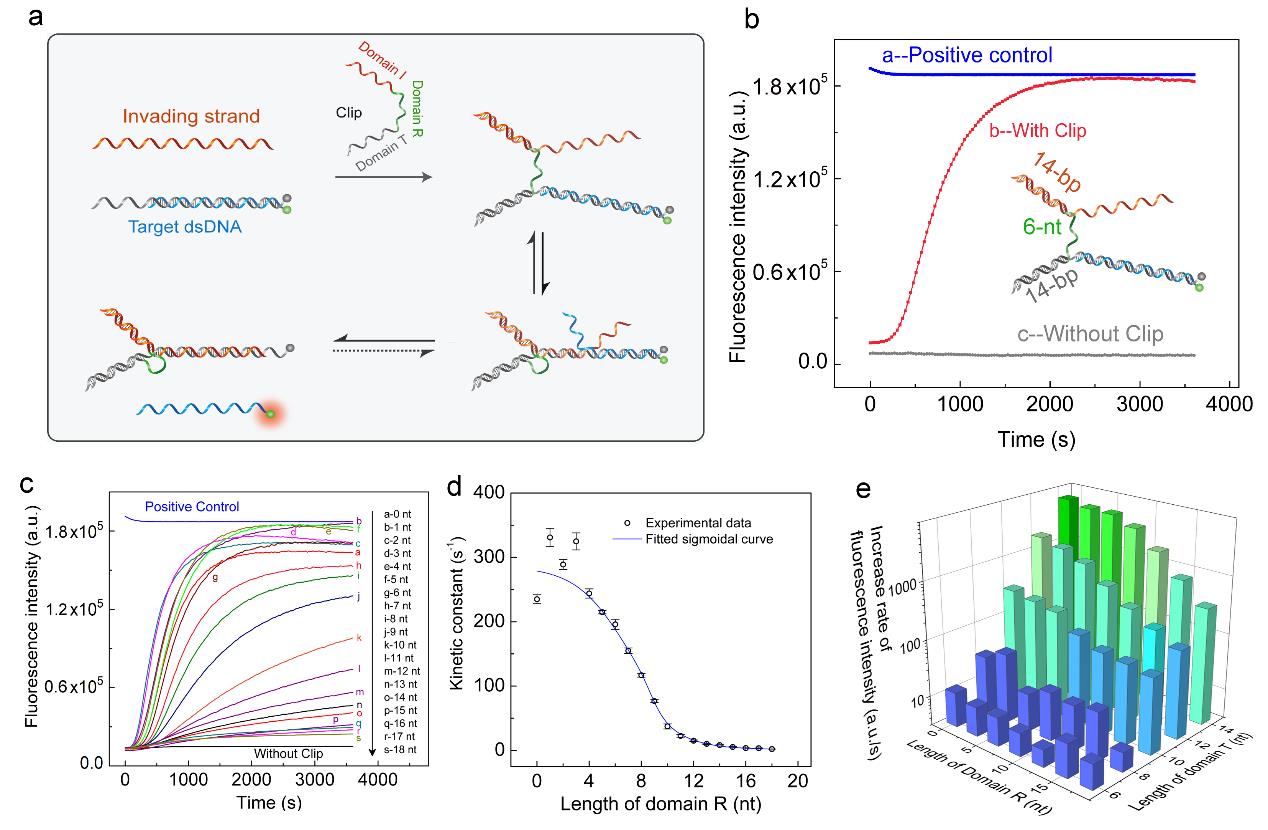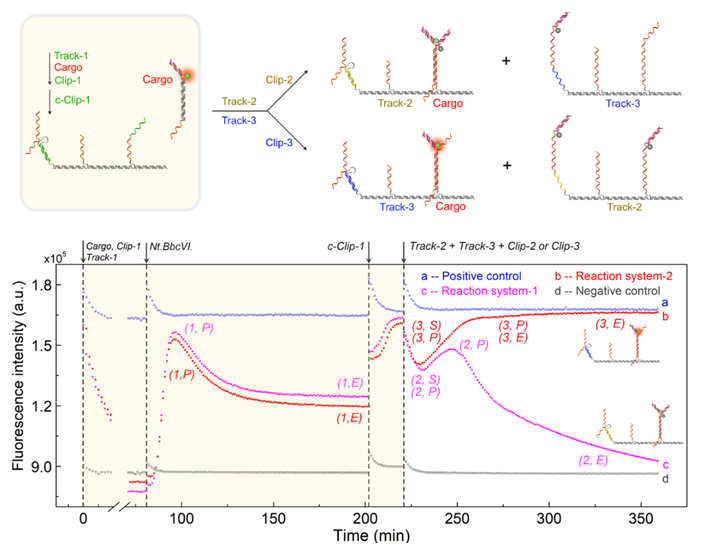ACS Nano (IF15.881), a famous international journal, recently published an online report by Prof. XIAO Xianjin, Institute of Reproductive Health of TJMC, entitled Multifunctional Clip strand for regulation of DNA and displacement and construct Ionofcomplex DNA nanodevices.

DNA nanotechnology is an important branch of nanotechnology, based on the high specificity and programmability of complementary base pairing. DNA can be designed into nano-devices with special functions, such as DNA circuits and DNA robots. At present, these powerful DNA nanodevices have been widely used in drug delivery, targets recognition, photothermal therapy, biological imaging, synthetic biology and many other biomedical fields, and gradually become an important development direction of future medical technology.
DNA strand displacement reaction is the basic element to construct all kinds of DNA nanodevices. Among them, Toehold-mediated DNA strand displacement reaction is the most widely used. However, the regulatory elements which can be used to finely regulate the Toehold-mediated DNA strand displacement reaction are very limited, and their regulatory functions are single, which seriously limits the development of DNA nanodevices to more complex structures and more powerful functions.
Professor Xiao Xianjin has developed a novel regulatory element for DNA strand displacement reaction: Clip. Clip elements perform a variety of regulatory functions, including fine-tuning of reaction rates, allosteric strand displacement, selective activation and resetting reactions. The novel regulatory tool is single-stranded DNA, which is divided into an invasion region (I), a regulatory region (R) and a target region (T). I is complementary to a portion of the invading strand, T is complementary to the target dsDNA, and R is a region of adjustable length. By adjusting the length of the R region, the rate of DNA strand displacement reaction can be finely controlled.

Figure 1. (A) Schematic diagram of the working mechanism of the Clip element; (B-e) experimental result and kinetic model of Clip modulating DNA strand displacement reaction rate.

Figure 2. Path of Clip Element Programming DNA Walker
Taking advantage of the multi-function of Clip, the research team has further constructed a DNA Walker based on Clip elements, which has the unique functions of controllable walking and programmable path. In addition, the AND/OR logic gates based on Clip elements are constructed and integrated to realize complex logic circuits. According to the literature, the DNA logic circuit is the first DNA circuit that can repeat calculation and process different input signals in a real sense.
The new DNA strand displacement reaction regulatory element Clip developed here has successfully compatible with various DNA nanomachines and achieved a variety of flexible and complex functions, which can greatly expand the application of DNA nanomachines in nucleic acid research and medicine.

Figure 3. Repeatable DNA Logic Circuit Based on Clip
paper lingkage:https://pubs.acs.org/doi/10.1021/acsnano.1c01763
